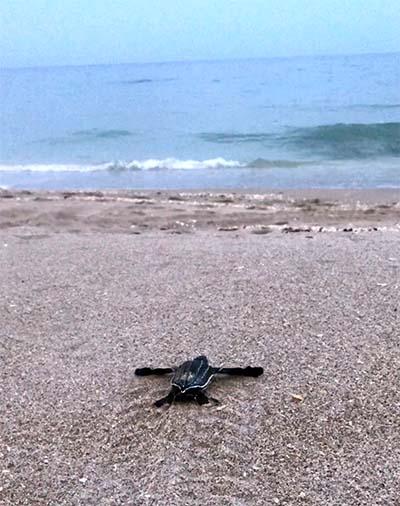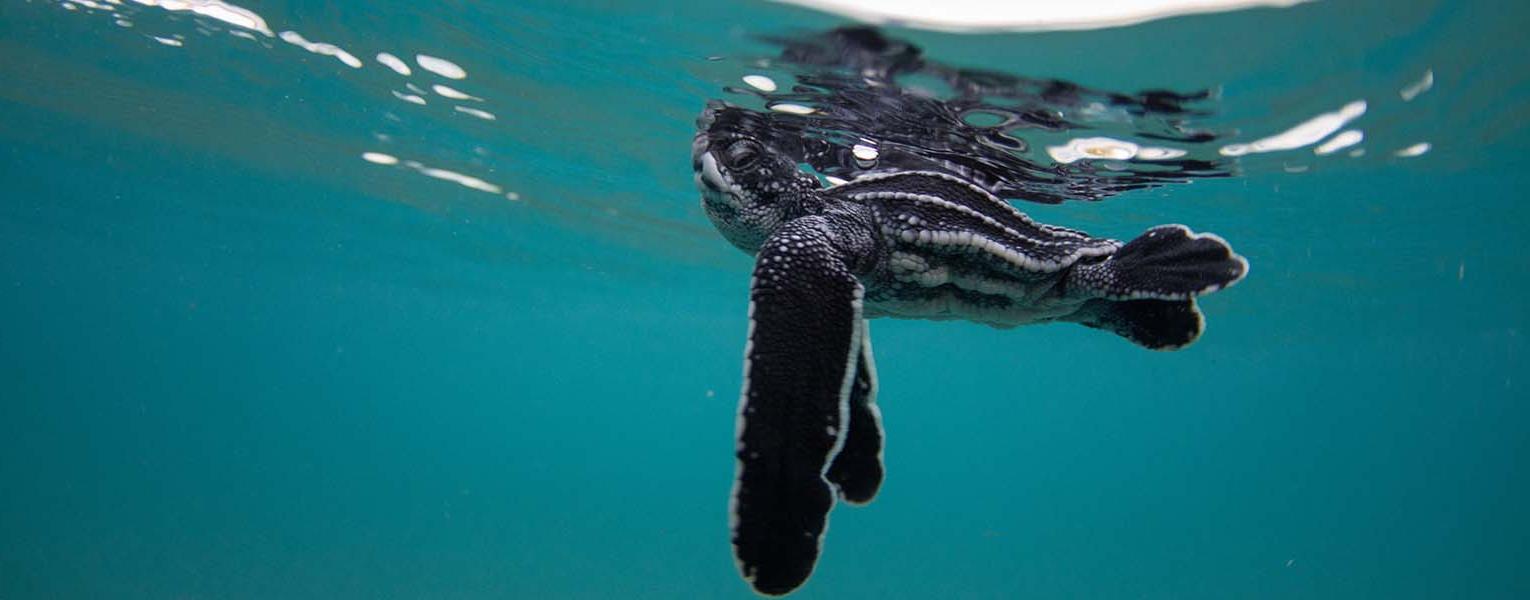12/20/2022
Florida Atlantic: Trouble Seeing the Sea
Florida Atlantic researchers recently discovered that without the moon’s light, baby leatherback sea turtles have trouble finding the ocean after they hatch.
For most marine turtles, the seaward journey upon hatching is straightforward. However, leatherback hatchlings often get disoriented and spin around in circles trying to find the ocean. Circling wastes energy and puts them at increased risk of danger from predators like birds, raccoons and crabs, said Samantha Trail, a doctoral student in the Department of Biological Sciences in the Charles E. Schmidt College of Science and lead author of the new research.
To better understand why this circling behavior happens and why it is most commonly observed in leatherbacks, Trail, and her advisor and co-author, Michael Salmon, Ph.D., research professor, first had to determine how sensitive the leatherbacks were to light. They discovered that compared to their hard-shelled relative, the loggerhead, leatherbacks were 10 to 100 times less sensitive to light wavelengths.
Leatherback eyes also failed to show any obvious structural adaptations that might offer improved vision function under dim lighting conditions, such as a larger cornea or lens. That finding led the researchers to the hypothesis that circling might be related to how much light was present at the beach when hatchlings crawled from the nest to the sea. They then compared how the two species behaved under two different moon phases: bright light during a full moon and only starlight under a new moon.
Results of the study, published in the journal Animal Behaviour, revealed that under dark new moon conditions, leatherbacks circled more than loggerheads. But why this happens surprised the researchers because leatherbacks, both as juveniles and as adults, feed during the day and at night, whereas green turtles and loggerheads primarily feed during the day.
“Leatherback eyes are less sensitive to all wavelengths of light than loggerheads, and during a dark night, they experience difficulty in determining the location of the seaward horizon,” Trail said. “Even so, leatherback hatchlings eventually crawl to the sea, even during a new moon. It just takes them longer because they stop occasionally to circle, which we think enables them to re-evaluate, and eventually confirm, the correct crawl direction.”
These results raised an obvious question: why should leatherbacks be less sensitive to light than loggerheads, especially since circling lengthens the time hatchlings remain on the beach and increases exposure to terrestrial predators? Trail and Salmon hypothesize that those costs persist because other differences in leatherback visual capabilities enhance their ability to detect prey, mates or favorable habitats in the open ocean, where these turtles live. That habitat presents a visual environment that is very different from the one occupied by loggerheads, a species that for the most part resides in shallow, coastal waters.
If you would like more information, please contact us at dorcommunications@kome-shibahara.com.

Doctoral student Samantha Trail at a nesting beach in Florida with a baby leatherback sea turtle.

A hatchling leatherback makes its way from the shore to the ocean.
